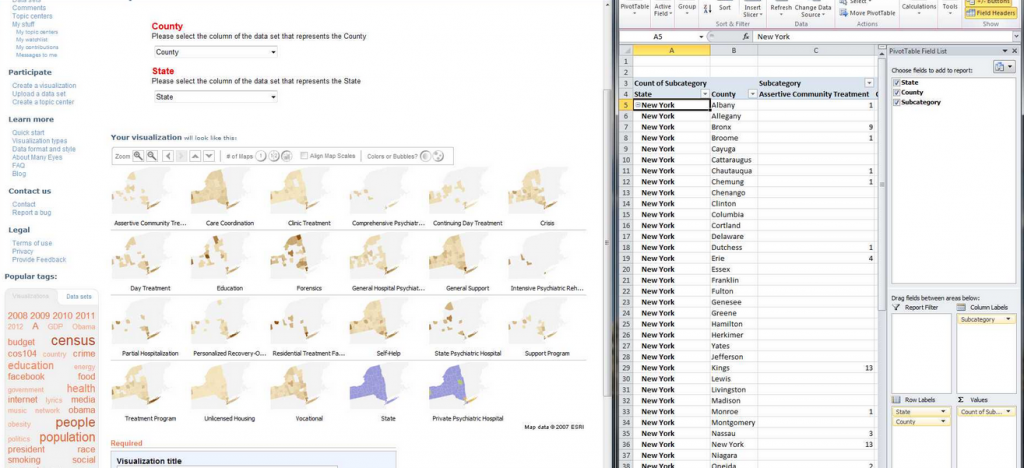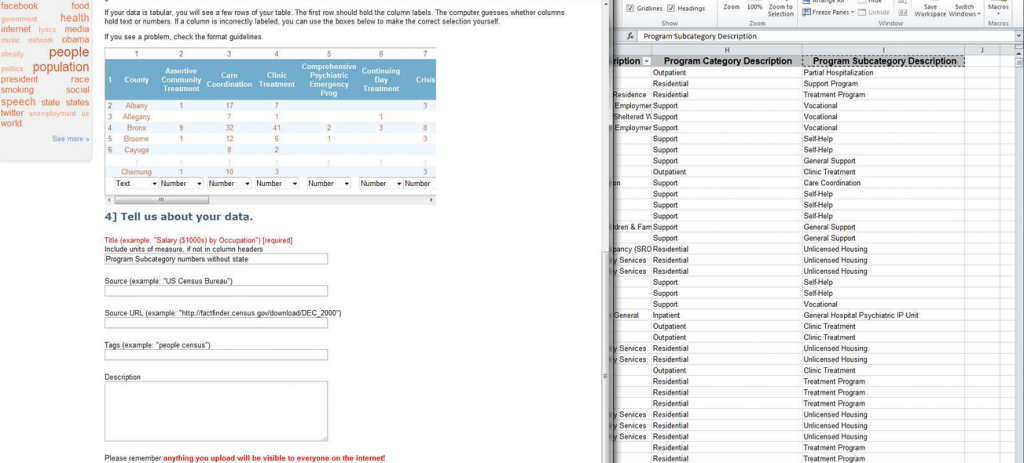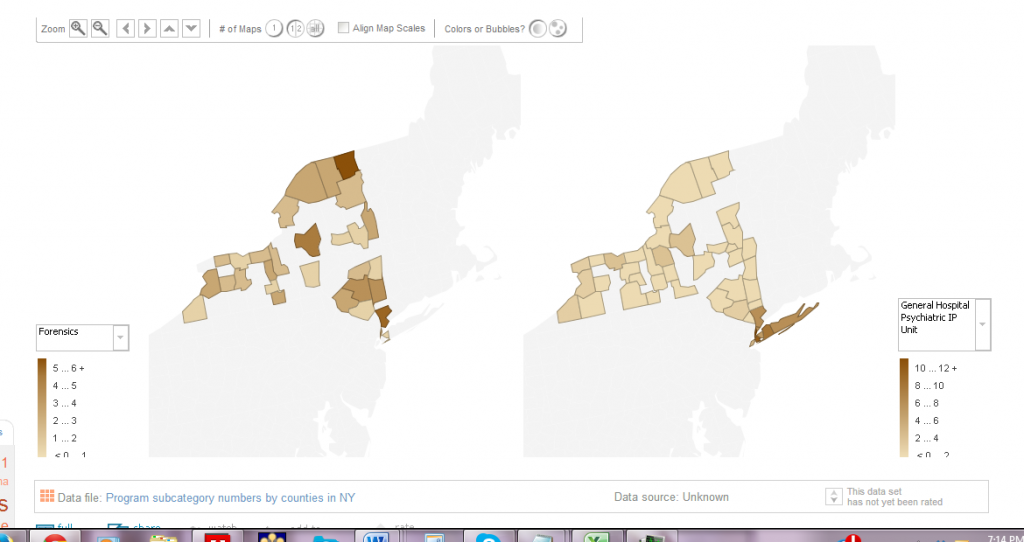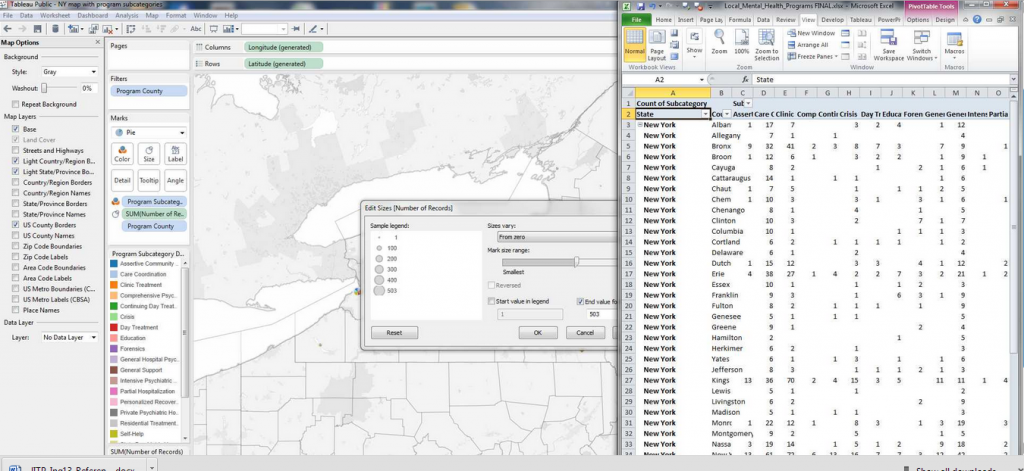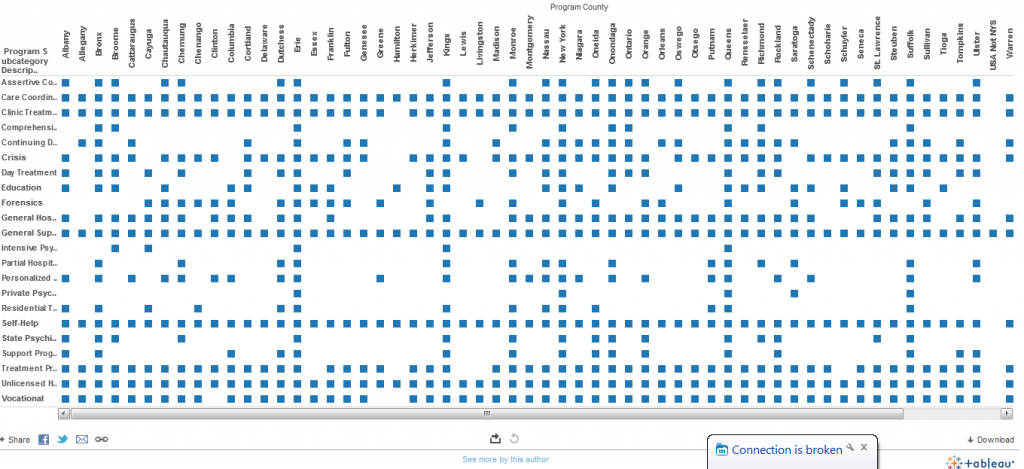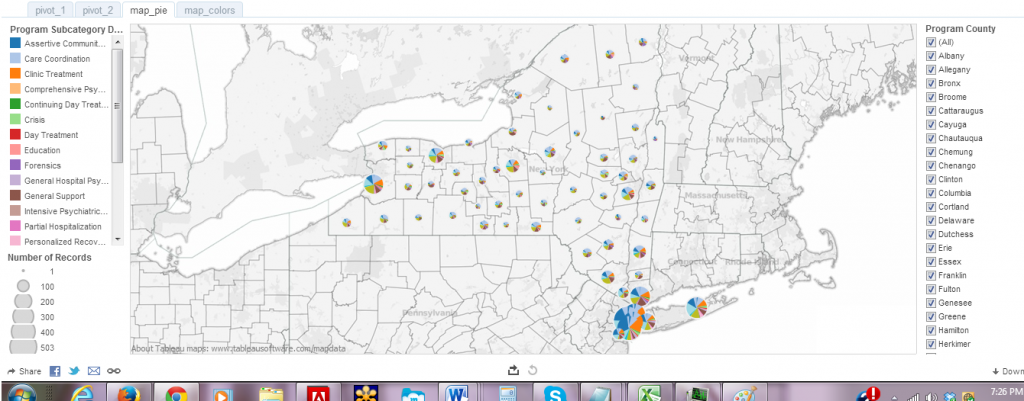Although my post last week discussed how data visualizations such as maps could be used to promote social change, often overlooked are discussions regarding tips and tools for gathering evidence which can be used for mapping social inequities. Therefore, this post explores how Evernote 5 can be used as a free and powerful evidence-gathering digital tool for highlighting social inequities. Evernote 5 is available for free for both Mac and recently released for Windows.
In an interview with Eric Cadora from The Justice Mapping Center, for our From Punishment To Public Health (P2PH) Social Justice Topic Series, he showcases how maps can expose the cross-sections between public health and public safety in vulnerable communities. Specifically, Cadora finds that populations which often experience chronic ill-health are often also the same populations which are in and out of prison and jail. Other studies have found a correlation between crime and chronic disease, which are often reinforced by high levels of health illiteracy and disparity (The Poverty Clinic, Paul Tough).
As the worlds of public health and public safety continue to merge, this presents valuable opportunities for academics and social justice advocates to document and gather evidence of how these dynamics play out within their communities.
I decided to begin my own evidence-gathering efforts as I went about my travels throughout New York City. For my exercise, I was interested in gathering evidence on the types and number of community health clinics that existed in high crime NYC neighborhoods.
In order to do this, I downloaded both the App and web version of Evernote 5 (App versions are available for Iphones and Android).
For those not familiar, Evernote is a note-taking and clipping application that lets you save all kinds of bits of information into various project-oriented “notebooks.” Academics have been using Evernote to write dissertations or articles, conduct classes and research, etc. However, less is known about how it can be used for evidence and information-gathering.
FOR STARTERS – Aspects of Evernote that make it an especially useful tool for evidence-gathering are:
- Ability to go almost completely paperless! Digitize your physical notes and back them up in the cloud. This can come especially handy when ensuring the protection of sensitive documents and information.
- Allows you to collect an array of multi-media and documents and keep it neatly organized and searchable: You can further use Evernote’s tagging feature and then take advantage of their amazing search and filtering capabilities. In Evernote, you can search by: keywords, tags, dates, or note types (such as images, audio, PDF, etc.). Evernote’s optical character recognition capability (OCR) also converts images of letters/numbers into searchable text (for example as in words from a photo, scanned document, or PDF).
- Use your personal Evernote email address @m.evernote.com: This allows you to email notes to specific project notebooks and keep your evidence well-organized.
- Collaborate and share your work with others: Create a link to a private shared workspace and send it to everyone involved. At the same time, you can make any of your notebooks publics which can then be posted on a webpage or included in an email.
- Dictate your thoughts, ideas or conversations if you have a smart mobile device. You can then use Voice2Note to then convert audio notes into text to make them easily searchable. Simply connect your Evernote account and the first 30 seconds of your notes will be transcribed.
- Use the Atlas feature to capture GPS information along with the notes you take (now available in Evernote 5): For example, you can use this if you want to capture the specific location of an event, where evidence was found or collected, image taken, etc.
- This in return allows you to start visualizing geo-specific trends that may either highlight gaps in your evidence-gathering or important issues and patterns that warrant further exploration. Most importantly, it allows you to start outlining the key trends for your mapping visualization.
- The Evernote app allows you to effortlessly capture evidence during your day-to-day activities: This means that you will always be prepared to quickly capture, geo-code, and catalog a valuable piece of information for future reference.
Setting Up Your Evernote Evidence-Gathering Notebook
Using the web version of Evernote 5, I create a notebook called, Community Public Health Clinics in High Crime Neighborhoods. Once I created this notebook, I was then able to upload evidence of community public health clinics in several forms, notes, images, audio, or video.
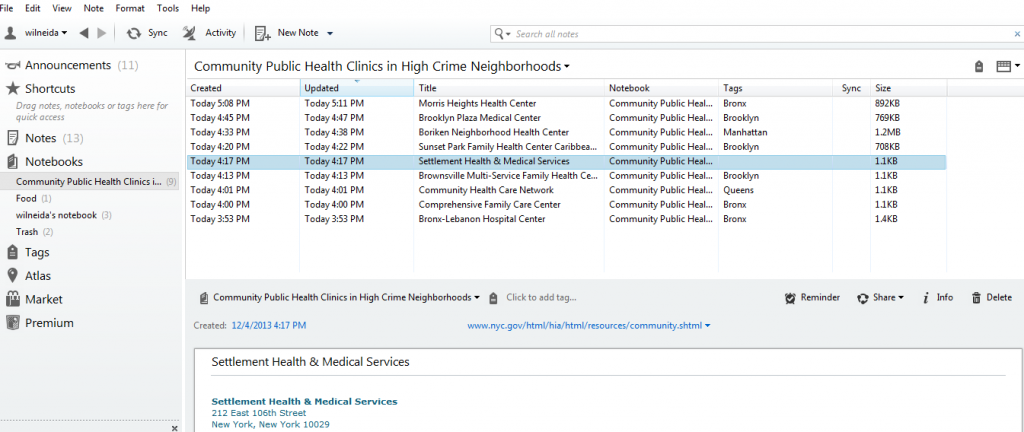
-
My evidence-gathering notebook where I can upload notes, images, audio, or video and geo-code them.
-
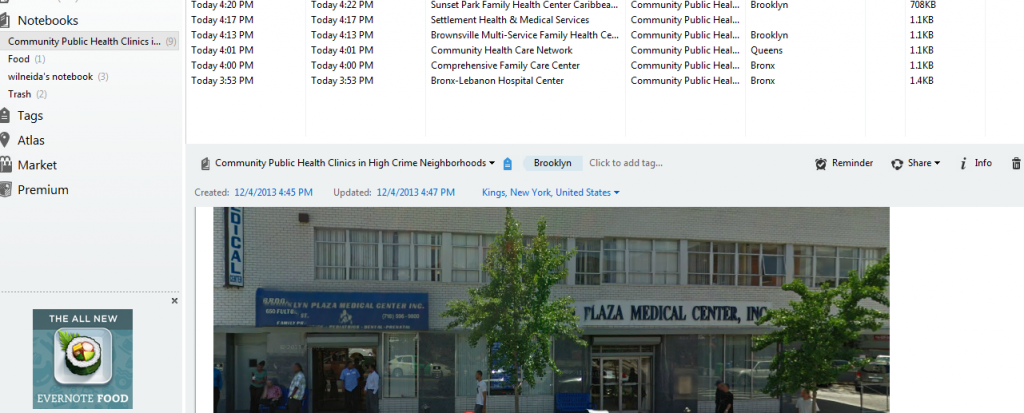 Here you can see images of the clinics I have uploaded for future reference.
Here you can see images of the clinics I have uploaded for future reference. Finally, Evernote 5’s Atlas feature allows me to see my notes, images, and pictures in map view. This map views helps (a) to ensure that you are covering all the locations/areas that you want to focus on and (b) helps ensure the accuracy of the location for each piece of evidence collected.
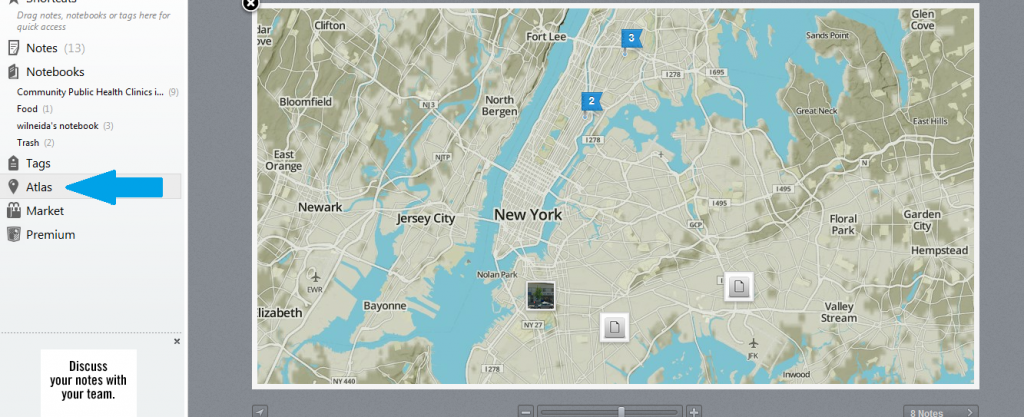 Here you can see images and notes regarding community health clinics which I have uploaded for future reference.
Here you can see images and notes regarding community health clinics which I have uploaded for future reference.
Final Thoughts
Moving beyond map visualizations, there are many contexts and ways to use evidence for promoting social justice. Consider, these real-life examples from the New Tactics in Human Rights website of the types of social justice contexts which Evernote’s features could be most useful for:
• Documenting cases of injustices that can be used as legal documentation in courts: See example of collaboration between a human rights group and local monitoring teams in Yemen.
• For coordinating and gathering info during participatory research: Read about how groups and individuals in Mozambique launched a collaborative effort to train locals on data gathering which also gave local NGOs a concrete research instrument they could use for future endeavors.
• Using technology to share and gather information on environmental hazards: This is where Evernote’s mapping/Atlas feature can really come in! Read about how Environmental Defense used technology to categorize information about harmful environmental hazards such as air pollutants, toxic chemicals, etc.
• Collect and preserve community stories and testimonies: Read about how scholars trained in reading and interpreting the texts worked with locals in Tibet to enter ancient text into an electronic database.
***
This post is part of the Monthly Social Justice Topic Series on From Punishment To Public Health (P2PH). If you have any questions, research that you would like to share related to P2PH or are interested in being interviewed for the series, please contact Morgane Richardson at [email protected] with the subject line, “P2PH Series.”


